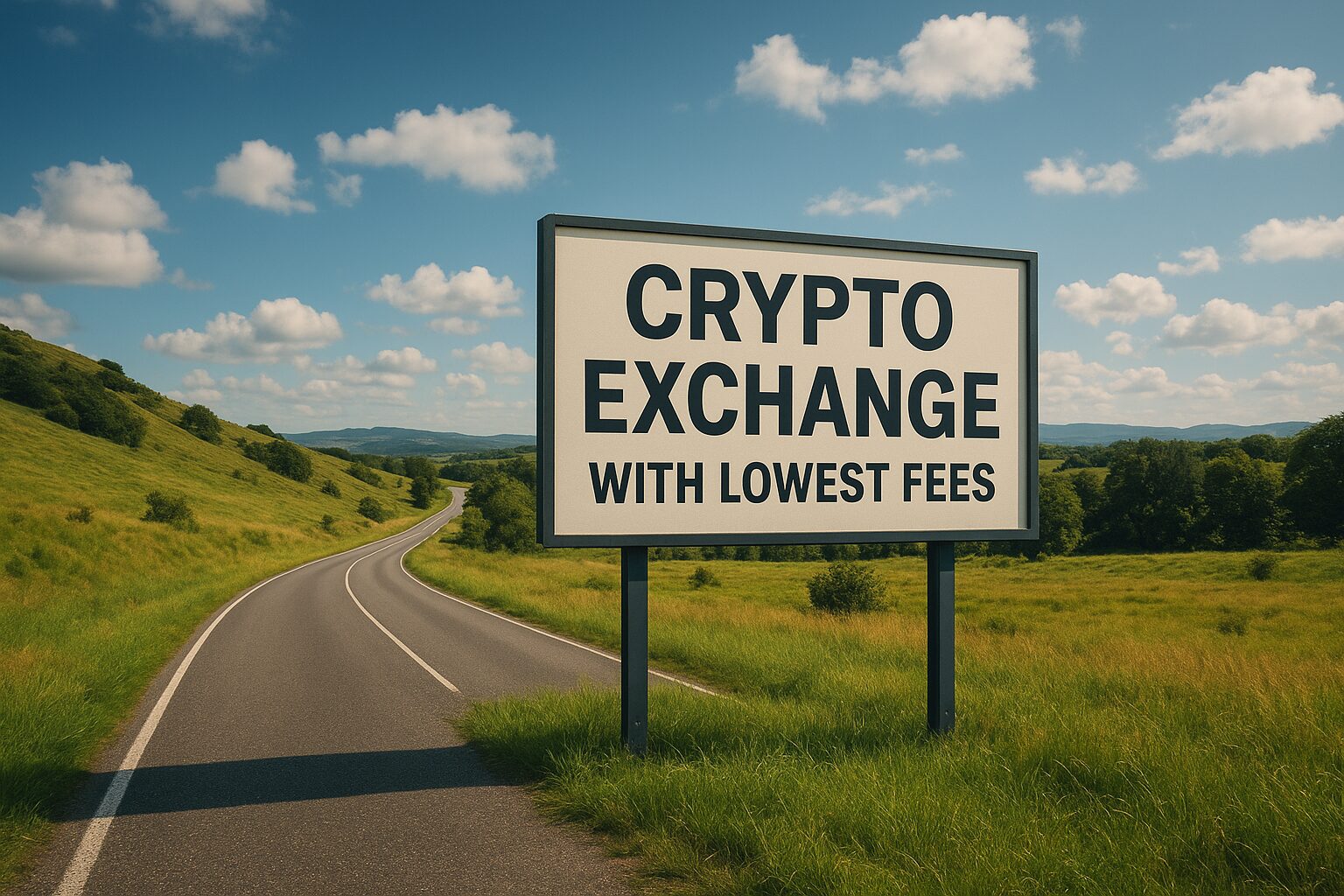Cryptocurrency trading has become increasingly popular, with millions of individuals engaging in the buying, selling, and trading of digital assets daily. As the market continues to grow, it’s essential to consider various factors when choosing a crypto exchange with lowest fees. One of the most significant factors is the fees associated with trading on these platforms.
Why Fees Matter
Fees can significantly impact your profitability. Even a seemingly small fee can add up over time, especially for active traders. For instance, a 0.1% fee on a $1,000 trade amounts to $1. Over 100 trades, that’s $100 in fees. Therefore, selecting a crypto exchange with the lowest fees can lead to substantial savings.
Scope of This Guide
This guide aims to provide a comprehensive comparison of crypto exchanges with the lowest fees, helping you make an informed decision based on your trading needs.
Understanding Crypto Exchange Fees
Types of Fees
- Trading Fees (Maker vs. Taker):
- Maker Fees: Charged when you add liquidity to the market by placing a limit order that isn’t immediately matched.
- Taker Fees: Charged when you remove liquidity by placing an order that matches an existing order.
- Deposit and Withdrawal Fees:
- Deposit Fees: Some exchanges charge fees for depositing funds, especially for fiat currencies.
- Withdrawal Fees: Fees charged when withdrawing funds from the exchange, which can vary based on the cryptocurrency and network congestion.
- Hidden Fees:
- Spreads: The difference between the buy and sell prices.
- Conversion Fees: Charges for converting one cryptocurrency to another.
- Inactivity Fees: Fees imposed if your account remains inactive for a certain period.
How Fees Affect Your Profit
High fees can erode your profits, especially for frequent traders. For example, if you’re trading $10,000 worth of cryptocurrency and incur a 0.5% fee, that’s $50 per trade. Over 100 trades, that’s $5,000 in fees. Therefore, choosing an exchange with lower fees can significantly enhance your profitability.
Factors to Consider When Choosing a Low-Fee Exchange
While low fees are crucial, other factors should also influence your decision:
- Security and Regulation: Ensure the exchange is regulated and employs robust security measures to protect your funds.
- Payment Options: Check if the exchange supports your preferred payment methods, such as bank transfers, credit cards, or cryptocurrencies.
- Trading Volume and Liquidity: Higher trading volumes and liquidity can lead to better price execution and lower slippage.
- User Interface and Customer Support: A user-friendly interface and responsive customer support can enhance your trading experience.
- Available Cryptocurrencies: Ensure the exchange offers a wide range of cryptocurrencies that align with your trading interests.
Top Crypto Exchanges With Lowest Fees
Based on recent data, here are some of the top crypto exchanges known for their low fees:
1. Bybit
- Trading Fees: 0.10% for both maker and taker.
- Deposit Fees: Free for crypto deposits; fiat deposits may incur fees.
- Withdrawal Fees: Varies by cryptocurrency.
- Pros: Offers a wide range of cryptocurrencies and advanced trading features.
- Cons: Limited fiat deposit options.
2. Binance
- Trading Fees: 0.10% for both maker and taker.
- Deposit Fees: Free for crypto deposits; fiat deposits may incur fees.
- Withdrawal Fees: Varies by cryptocurrency.
- Pros: Largest exchange by trading volume, offering a vast selection of cryptocurrencies.
- Cons: Faces regulatory challenges in some countries.
3. Kraken
- Trading Fees: 0.16% for maker and 0.26% for taker.
- Deposit Fees: Free for crypto deposits; fiat deposits may incur fees.
- Withdrawal Fees: Varies by cryptocurrency.
- Pros: Known for its strong security measures and regulatory compliance.
- Cons: User interface may be complex for beginners.
4. Coins.ph
- Trading Fees: Approximately 0.6% for spot trading.
- Deposit Fees: Free for PHP deposits; other methods may incur fees.
- Withdrawal Fees: Free for PHP withdrawals; other methods may incur fees.
- Pros: Fully regulated in the Philippines, offering a user-friendly interface.
- Cons: Limited selection of cryptocurrencies.
5. PDAX
- Trading Fees: Approximately 0.6% for spot trading.
- Deposit Fees: Free for PHP deposits; other methods may incur fees.
- Withdrawal Fees: Free for PHP withdrawals; other methods may incur fees.
- Pros: BSP-licensed, ensuring regulatory compliance.
- Cons: Limited selection of cryptocurrencies.
Fee Comparison Table
| Exchange | Trading Fee | Deposit Fee | Withdrawal Fee | Pros | Cons |
|---|---|---|---|---|---|
| Bybit | 0.10% | Varies | Varies | Wide range of cryptocurrencies, advanced features | Limited fiat deposit options |
| Binance | 0.10% | Varies | Varies | Largest exchange by trading volume, vast selection of cryptocurrencies | Regulatory challenges in some countries |
| Kraken | 0.16%/0.26% | Varies | Varies | Strong security measures, regulatory compliance | Complex user interface |
| Coins.ph | ~0.6% | Free for PHP | Free for PHP | Fully regulated in the Philippines, user-friendly interface | Limited selection of cryptocurrencies |
| PDAX | ~0.6% | Free for PHP | Free for PHP | BSP-licensed, regulatory compliance | Limited selection of cryptocurrencies |
Tips to Reduce Trading Fees
- Use Exchange-Native Tokens: Some exchanges offer fee discounts if you use their native tokens to pay for fees.
- Choose Maker Orders: Maker orders often incur lower fees than taker orders.
- Avoid Frequent Small Trades: Consolidate your trades to reduce the number of transactions and associated fees.
- Check for Promotions: Some exchanges offer promotional periods with reduced or zero fees.
Common Mistakes to Avoid
- Ignoring Hidden Fees: Always consider all potential fees, including spreads and conversion fees.
- Choosing Based Solely on Fees: Balance low fees with other factors like security and available features.
- Neglecting Security: Ensure the exchange employs robust security measures to protect your funds.
Conclusion
Selecting a crypto exchange with the lowest fees is crucial for maximizing your profitability. However, it’s essential to balance low fees with other factors like security, available features, and user experience. By considering all these aspects, you can choose an exchange that aligns with your trading needs and goals.
FAQs
1. What is the difference between maker and taker fees?
- Maker Fees: Charged when you add liquidity to the market by placing a limit order.
- Taker Fees: Charged when you remove liquidity by placing an order that matches an existing order.
2. Are low-fee exchanges safe?
Yes, many low-fee exchanges implement robust security measures. However, always conduct thorough research before choosing an exchange.
3. Can I switch exchanges without losing funds?
Yes, you can transfer your funds between exchanges. Ensure you understand the withdrawal and deposit processes to avoid any issues.
4. How often do crypto exchange fees change?
Fees can change periodically. Always check the exchange’s fee schedule for the most up-to-date information
5. Do low fees mean better overall trading experience?
Not always. Consider security, liquidity, user interface, and customer support along with fees.
6. How can I calculate the total fees before trading?
Add trading fees, deposit/withdrawal fees, and potential hidden fees to estimate the total cost.
7. Are there exchanges that offer zero fees?
Some exchanges run promotions or offer zero-fee trading for specific pairs, but check for hidden costs like spreads.
8. Does trading volume affect the fees I pay?
Yes, high-volume traders often receive discounts or lower fee tiers on many exchanges.
9. Can using exchange-native tokens reduce my fees?
Many platforms, like Binance, offer fee discounts if you pay with their native token.
10. Should beginners prioritize low fees over other factors?
Beginners should balance low fees with ease of use, regulation, and security to ensure a safe trading experience.
Disclaimer
The information provided in this guide is for informational purposes only and does not constitute financial advice. Always conduct your own research and consult with a financial advisor before making investment decisions.



